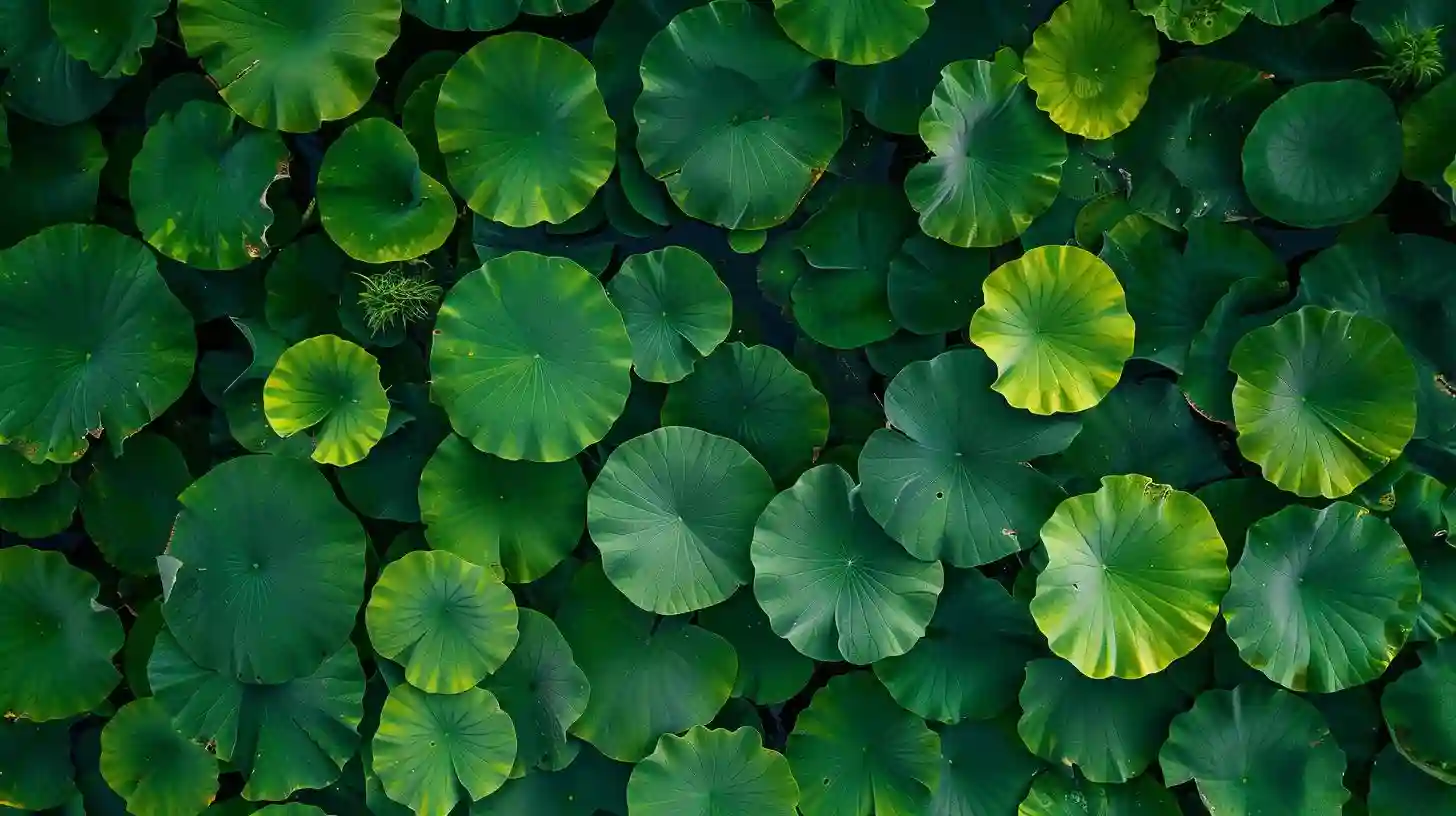
Lotus leaves have long been admired for their ability to remain dry even when immersed in water. This unique feature has fascinated scientists and nature lovers for many years. So why don't lotus leaves get wet? Let's dive into the science behind this fascinating phenomenon.
The secret of the lotus leaf's ability to repel water lies in its microscopic structure. The surface of the lotus leaf is covered with tiny tubercles called papillae, which are also known as “micronanostructures”. These papillae are so small that they cannot be seen with the naked eye, but they play a crucial role in preventing water from adhering to the leaf surface.
When water comes into contact with a lotus leaf, tiny papillae create a cushion of air between the water droplet and the surface of the leaf. This layer of air acts as a barrier, preventing water from coming into direct contact with the leaf. As a result, a drop of water remains on the top of the sheet without penetrating into it, giving the impression that the sheet is completely dry.
In addition to the papillae, the surface of the lotus leaf is also covered with a layer of wax. This wax helps repel water by reducing the surface tension of water droplets. Instead of spreading and wetting the sheet, the water droplets form balls and roll off the surface, taking dirt and debris with them. This self-cleaning mechanism helps protect the lotus leaf from contaminants, promoting photosynthesis and allowing the plant to thrive in its environment.
The combination of papillae and waxy coating on the surface of the lotus leaf is what makes it so effective at repelling water. However, this unique property of the lotus leaf goes beyond mere aesthetics. It also has practical applications in various fields, including materials science, engineering and medicine.
Materials scientists have long been intrigued by the ability of lotus leaves to repel water, as it offers the potential to create superhydrophobic surfaces. These surfaces are highly water-repellent and have a wide range of potential applications, including self-cleaning coatings for windows, textiles and electronic devices. By studying the structure and chemical composition of the lotus leaf, scientists were able to develop new materials that mimic its water-repellent properties.
Engineers have also looked to the lotus leaf for inspiration when designing more efficient water collection systems. The unique structure of the lotus leaf allows it to catch and retain water droplets, which can be useful in arid regions where water scarcity is an acute problem. By mimicking the micro-nanostructures of lotus leaves, engineers were able to develop new methods for harvesting water from the air, improving water conservation efforts and providing a sustainable source of clean water.
In the medical field, researchers have studied the water-repellent properties of lotus leaves to develop new drug delivery systems and medical devices. By coating medical implants with materials that mimic the structure of the lotus leaf, scientists have been able to create devices that are less prone to bacterial infection and have improved biocompatibility. This innovation has the potential to revolutionize medical technology, making treatments safer and more effective for patients.
The lotus leaf's ability to repel water is a testament to the wonders of nature and the ingenuity of evolution. By studying the unique structure and properties of the lotus leaf, scientists and engineers have been able to discover new opportunities to create innovative materials and technologies that benefit society as a whole.